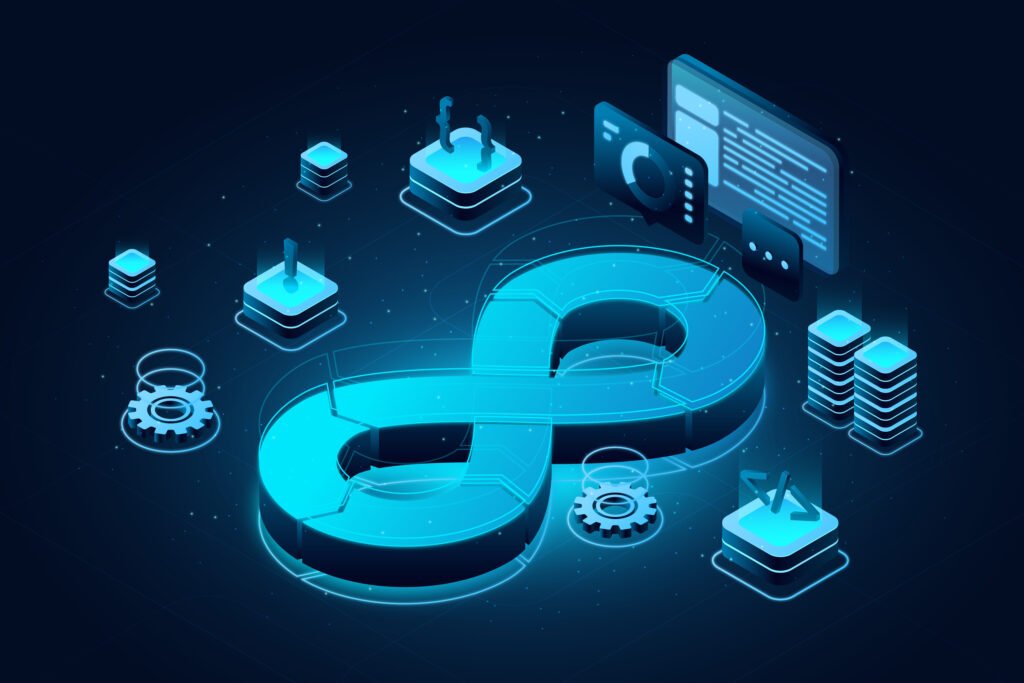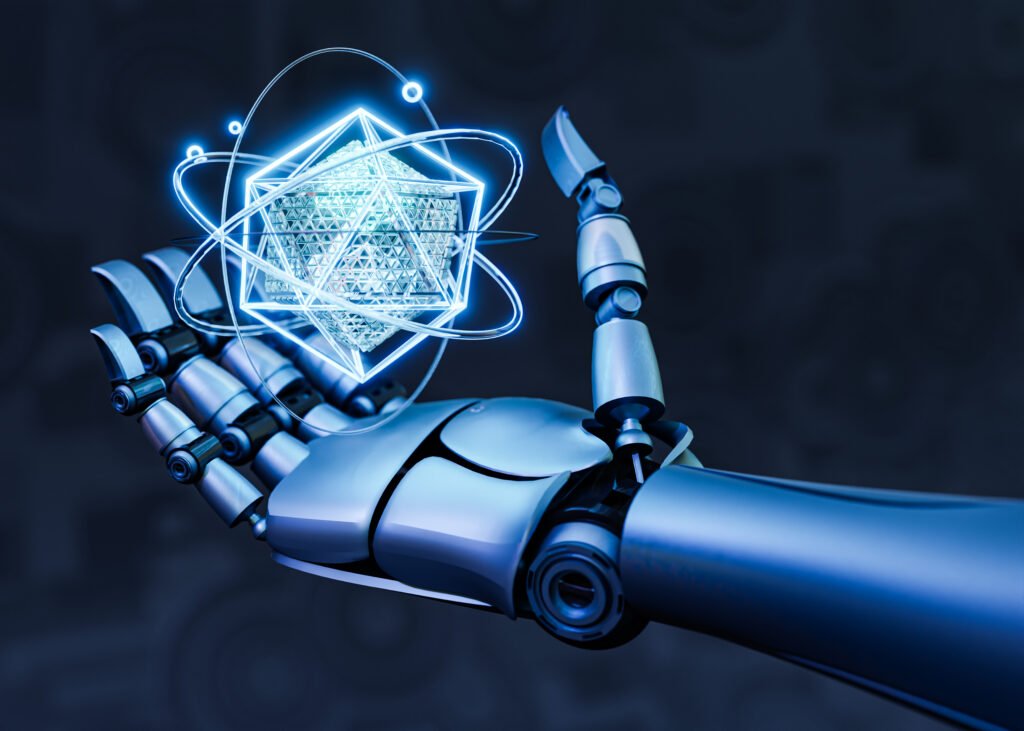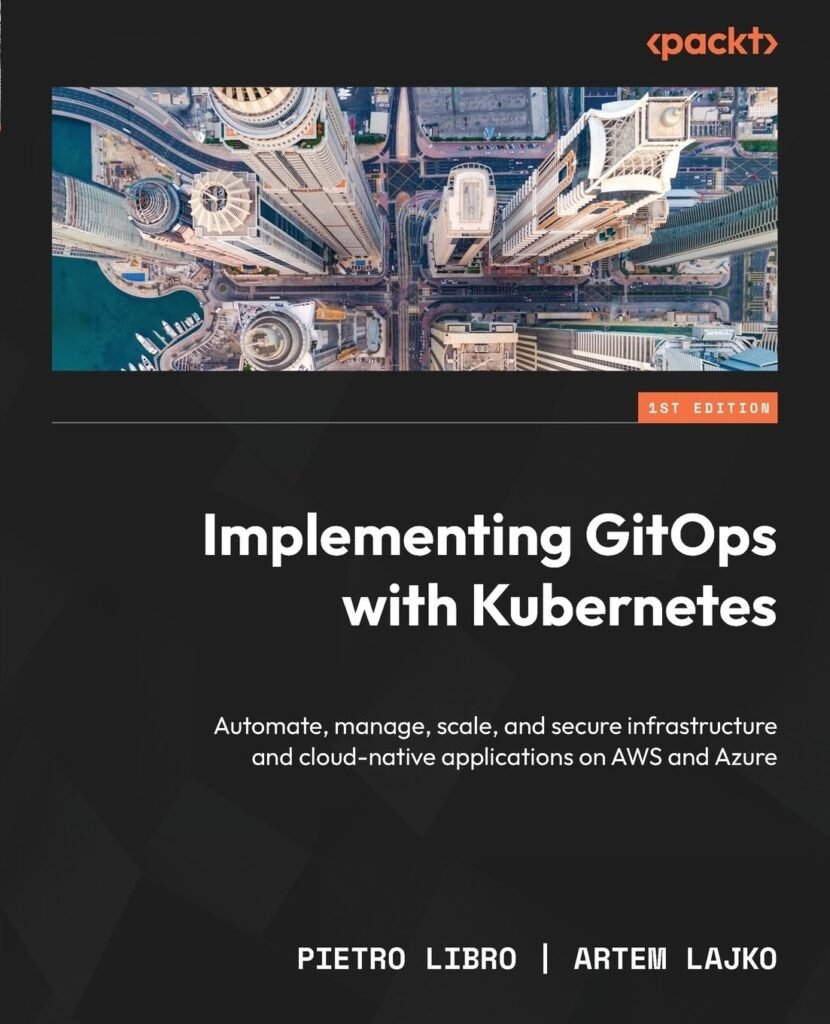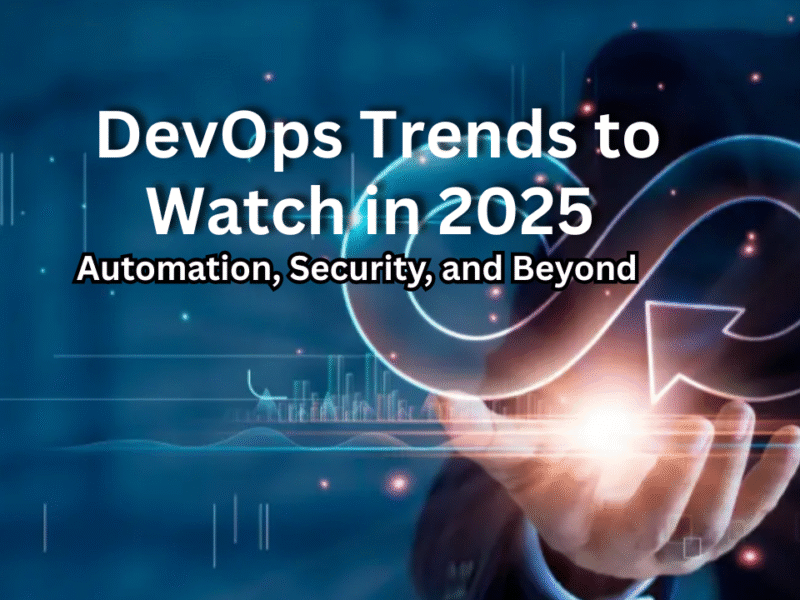Introduction
In 2025, DevOps is undergoing significant changes as businesses continue to adapt to new technology developments and business requirements. Many companies are now focused on automation and team collaboration, which are becoming key to achieving better results in software development and IT operations. As organizations move towards agile frameworks, the need for more efficient processes has driven the adoption of DevOps practices, helping companies get things done faster.
The impact of AI and DevSecOps cannot be ignored, but it is the salient trends such as security and automation that are truly transforming the DevOps ecosystem. Companies that capitalize on these trends will reduce the risk of failure and streamline their efforts, positioning themselves ahead of the competition. From my personal experience, embracing right trends can significantly improve your chances for successful implementation of DevOps strategies. Also read AI software development
Why is DevOps so popular?
In today’s tech world, the integration of development and operations has become a vital approach, creating a cultural and technical shift in how organizations build, distribute, and maintain software. It’s no longer about sticking to traditional methods; it’s about embracing modern technologies to elevate business performance. This transformation enables teams to deliver software faster and more reliably while enhancing quality and customer satisfaction.
As more people adopt this methodology and employees gain proficiency in its practices, companies will experience stronger outcomes. In 2025, statistics show that about 40% of development teams will be well-versed in this collaborative model. If your organization isn’t keeping pace with these advancements, it risks falling behind. Staying informed about industry shifts is essential to remain competitive in today’s rapidly evolving landscape.

Top 10 DevOps Trends To Watch Out in 2025
Stay Ahead with the Latest in Automation, Security, and Scalable Infrastructure
1. GitOps: Revolutionizing DevOps Through Git-Based Automation
GitOps is transforming the DevOps landscape by using Git as the single source of truth for infrastructure and application deployment. This trend enables faster, safer, and more collaborative deployments by integrating Git workflows with Kubernetes. In 2025, GitOps adoption is expected to skyrocket due to its powerful combination of automation, rollback capabilities, and improved deployment reliability.
2. Low-Code/No-Code DevOps: Accelerating App Delivery Without Deep Coding Skills
The rise of low-code and no-code platforms empowers developers and non-developers alike to build, test, and deploy applications rapidly. In DevOps, these tools reduce development time, foster innovation, and allow for faster prototyping, making them especially beneficial in fast-paced business environments.
3. Data Observability: Gaining Deep Insight Across DevOps Pipelines
Data observability is becoming essential for ensuring system health and minimizing downtime. By giving teams real-time visibility into data flows and system behavior, organizations can detect, diagnose, and resolve issues before they escalate. In 2025, expect deeper integration of observability tools across CI/CD pipelines.
4. AI & ML Integration in DevOps: Smarter Automation and Issue Prediction
Artificial Intelligence and Machine Learning are reshaping DevOps by enabling predictive analytics, anomaly detection, and intelligent automation. These technologies help teams detect errors early, optimize performance, and enhance the decision-making process, making DevOps pipelines more resilient and proactive.

5. Edge Computing in DevOps: Bringing Speed and Efficiency to Data Processing
With IoT, 5G, and smart devices gaining traction, edge computing has become a game-changer. DevOps practices are being adapted to manage deployments at the edge, enabling faster processing and real-time responses while reducing cloud dependency.
6. Kubernetes Expansion: Simplifying Orchestration at Scale
Kubernetes continues to dominate as the go-to platform for container orchestration. In 2025, innovations around security, observability, and GitOps integration are enhancing Kubernetes’ role in managing microservices, improving scalability, and simplifying complex deployments across environments.

7. Infrastructure as Code (IaC): Enhancing Consistency and Speed in Infrastructure Deployment
IaC allows infrastructure to be defined and managed through code, enabling faster and more reliable environment setups. With tools like Terraform and AWS CloudFormation, DevOps teams are embracing IaC to achieve consistent infrastructure management, version control, and auditability.
8. Enhanced CI/CD Pipelines: Continuous Integration Meets Rapid Delivery
Continuous Integration and Continuous Delivery (CI/CD) remain foundational to DevOps success. In 2025, these pipelines are evolving with better automation, security, and testing features to support faster feature releases without sacrificing quality or reliability.
9. DevSecOps: Embedding Security at Every Stage of Development
Security is no longer an afterthought. DevSecOps integrates security practices directly into the DevOps pipeline, ensuring vulnerabilities are detected early and compliance is maintained. Expect more tools and automation around threat modeling, static code analysis, and runtime protection.

10. Platform Engineering: Building Internal Developer Platforms (IDPs)
As DevOps matures, platform engineering is emerging as a key trend. Companies are building internal developer platforms to provide standardized tools, environments, and workflows, making it easier for teams to deploy and scale applications efficiently while reducing operational friction.
Leverage DevOps Trends to Transform Your Business in 2025
Uncover the Real-World Innovations Driving DevOps Success, Security, and Developer Productivity
1. Driving Digital Transformation with DevOps Practices and Expert Support
Successfully leveraging DevOps for digital transformation isn’t just about using the latest tools—it’s about expertise, experience, and execution. For instance, when CrayPay partnered with SIMFORM, they aimed to enhance scalability and user experience. Through continuous testing and agile development, a high-performing mobile solution was delivered, reducing checkout times and increasing customer satisfaction. This highlights how expert-led DevOps can power business transformation through innovation and reliability.
2. Continuous Testing and Monitoring: The Foundation of DevOps Success
Continuous testing ensures that every stage of the development lifecycle is validated in real-time. CrayPay’s success was also driven by adopting Firebase A/B testing, which enabled performance-based decisions before product launches. Monitoring and testing are no longer afterthoughts—they are essential for minimizing risk, reducing time-to-market, and ensuring the product aligns with user expectations.
3. Partnering with Managed DevOps Services for Scalable Success
Organizations often need external expertise to navigate the complexity of DevOps at scale. That’s where DevOps-managed service providers like SIMFORM excel—by streamlining development and operational collaboration. With services that focus on synchronizing teams and accelerating lifecycles, such partners enable faster, frequent, and more secure product releases, which are critical in today’s competitive digital economy.

4. Policy-Based Cloud Management: Elevating DevOps Security Standards
Security remains a top priority across DevOps pipelines. In 2025, we’re seeing increased use of policy-based cloud management to enforce best practices automatically. DevOps teams are configuring cloud resources via code and using frameworks to detect misconfigurations early, reducing risk across environments. This proactive approach enhances compliance and operational resilience.
5. Using Infrastructure as Code (IaC) to Identify and Prevent Threats Early
IaC is revolutionizing infrastructure provisioning, not just for efficiency but for security. By scanning IaC templates and configurations, teams can catch potential risks long before they become live issues. This shift toward “security as code” improves visibility and promotes a more robust and auditable infrastructure deployment cycle.
6. Configuration Scanning and ‘Audit Mode’ for Cross-Team Harmony
DevOps and security teams often operate independently, which can lead to misalignment. Configuration scanning tools combined with audit modes bridge this gap. By alerting teams about potentially disruptive changes before they go live, organizations avoid broken deployments and enable collaborative decision-making between dev, ops, and security teams.
7. Doubling Down on DevOps Automation Through GitOps
GitOps is transforming DevOps automation by centralizing configuration management in Git repositories. This creates a unified system for tracking, triggering, and validating changes—eliminating inconsistencies across developer environments. It also ensures automatic documentation of every change, improving traceability and trust in the automation pipeline.
8. Solving GitOps Challenges Through Skill-Building and Automated Testing
Despite its benefits, GitOps implementation comes with challenges, such as skill gaps or reliance on manual approvals. By focusing on education, automated testing of GitOps configurations, and encouraging full automation adoption, organizations can overcome these barriers and unlock the true power of seamless CI/CD automation.
9. Investing in Developer Experience: The True North of DevOps Innovation
Beyond automation and security, modern DevOps is about empowering developers. Enhancing the developer experience (DX) leads to better productivity and job satisfaction. Today’s trends include streamlining processes, reducing cognitive load, and ensuring developers have access to tools and environments that let them focus on building—not firefighting.

10. Platform Engineering and Developer Self-Service: Empowering Teams at Scale
Organizations are implementing platform engineering and Internal Developer Portals (IDPs) to enable self-service access to tools and environments. This reduces friction, boosts autonomy, and minimizes dependencies across teams. While these models demand specialized skills, when implemented correctly, they unlock greater speed, innovation, and cross-functional efficiency.
11. Looking Beyond the Hype: Real DevOps Changes Driving 2025 Innovation
While AI speculation dominates tech discussions, real DevOps advancements are happening in security, automation, and developer empowerment. These foundational trends might not grab headlines, but they’re the backbone of enterprise agility and innovation in 2025. Organizations that invest here will gain lasting advantages over competitors focused only on hype.
What’s the Future of DevOps?
AI and Automation Are Transforming DevOps
The future of DevOps is being rapidly redefined by the integration of Artificial Intelligence (AI) and Machine Learning (ML). These technologies are reshaping workflows, enabling predictive issue resolution, and automating repetitive tasks. As a result, development and deployment processes are becoming more optimized and significantly faster, reducing human error and increasing reliability across DevOps pipelines.
Serverless Architecture Becomes the New Normal
Serverless computing is revolutionizing how developers manage infrastructure. By abstracting server management responsibilities, this approach enables developers to focus purely on writing and deploying code. It not only simplifies operations but also speeds up development cycles and reduces costs—making serverless a powerful trend that’s here to stay.
Kubernetes Takes Over Container Management
Kubernetes continues to be the backbone of container orchestration and modern application deployment. Its widespread adoption is a testament to its ability to scale applications efficiently while simplifying the complexities of container management. As DevOps practices mature, Kubernetes is becoming indispensable for teams seeking agility and consistency.
Cultural Evolution Fuels DevOps Growth
Beyond tools and technologies, the DevOps culture is evolving to emphasize collaboration, transparency, and shared responsibility. Organizations are investing in team-wide cultural shifts that embrace the DevOps mindset—breaking down silos, encouraging open communication, and driving unified goals between development and operations.

Continuous Testing and Monitoring Take Center Stage
As DevOps pipelines become more sophisticated, Continuous Testing and Monitoring (CTM) is gaining greater importance. From early vulnerability detection to real-time performance tracking, CTM is crucial for delivering robust and secure software. This proactive approach ensures higher product quality and faster time-to-market.
DevOps as a Service (DaaS) Gains Popularity
For businesses seeking simplified DevOps adoption, DevOps as a Service (DaaS) is becoming an attractive solution. It offers scalable access to expert practices, tools, and environments—without the need for in-house expertise. DaaS is empowering organizations of all sizes to embrace DevOps efficiently and cost-effectively.
Frequently Asked Questions About Emerging DevOps Practices
1. How does AI/ML improve DevOps?
AI and Machine Learning help streamline DevOps by automating testing processes, predicting system failures before they occur, and improving performance monitoring. This leads to more reliable deployments and quicker issue resolution.
2. Why use GitOps?
GitOps allows for version-controlled infrastructure and automated deployments. By leveraging Git workflows, teams can collaborate more effectively and ensure consistent, auditable changes across environments.
3. How does Kubernetes impact DevOps?
Kubernetes simplifies container orchestration and supports the adoption of microservices. It offers scalability and self-healing capabilities, allowing applications to run more efficiently and reliably in production.
4. Why is CI/CD important in DevOps?
Continuous Integration and Continuous Delivery (CI/CD) are essential because they automate the software development lifecycle. They enable faster releases, consistent deployments, and reduce the chances of manual errors.
Conclusion
The future of this field is full of promise as technology rapidly evolves and digital transformation takes center stage. It will continue to reshape itself to meet business demands—emphasizing efficiency, collaboration, security, and adaptability. This evolution ensures quicker, more reliable software development and deployment, keeping businesses agile in the digital era.
As trends drive companies beyond basic automation, the focus will shift to continuous improvement and the adoption of innovative solutions. The future is about doing more with less, encouraging cross-team collaboration, maintaining security standards, and embracing change—all essential for thriving in today’s fast-paced tech environment.
Looking ahead to 2025 and beyond, the landscape will remain dynamic, shaped by shifting business needs and advancing technologies. To maintain a competitive edge, companies must stay informed and ready to adapt their strategies to align with modern practices.



